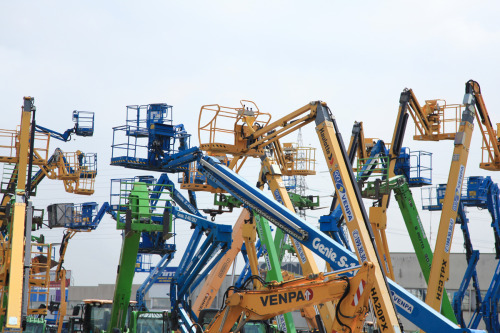
© Filippo Minelli
Since the Padania Classic’s research started through social media and ended up being presented as a reinterpretation of an “atlas” book, “Atlante dei classici padani”, it would be inadequate to define it as merely photography.
It is intriguing how they advanced the concept of landscape photography, using digital platforms, videos, audio tracks , objects, texts and, of course, photography. They created a hybrid mix that, thanks to its nature, is able to offer a profound portrait of the Padanian territory. At first sight we can feel an aesthetical approach typical of the landscape photography tradition. However, if we take a closer look, a troublesome analysis emerges which reveals subjects such as pollution, decadence, unfinished buildings and so forth. In this way they’re changing the approach by creating a satirical journey that aims to hit you where it hurts. The focus shifted from finding a new visual harmony to the reflection upon ethical, political and environmental issues and their consequences that characterize our time.
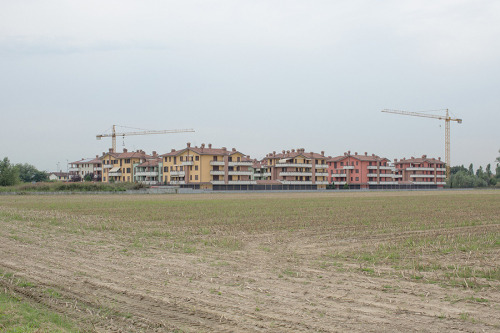
© Filippo Minelli
Thus, the focal point of this research revolves around these issues and thoughts, while media, on the other hand, can work as a means to intensify the aspect of contemplation considering that they each have a distinctive skill to offer. For instance, the interest of social media and the website manifests in its relationship with users. They extend an invitation to share as a group and as part of society; it’s not a lone journey. (The point is what and how we want to look, the matter is the approach…) Our objective concerns the appearance and the approach plays an important role in this.
We talked with Filippo Minelli, photographer and conceptual creator of ‘Padania Classic’. How did this project start? Where did you find your “journey companions”? Were you already working together on a kind of research before ‘Padania Classic’?
Filippo Minelli (FM): Some photos date back to 2009 but it formally started in 2011 when the research became more systematic. It started out as joking around with friends, sending them snapshots of weird stuff I found around the area where I was living at the time, a place called Franciacorta. It’s famous for its top quality wines and it’s quite beautiful if you focus your eyes in the right direction. Most of the landscape, however, consists of what you see in the book. Emanuele (the journalist who wrote the texts), Francesco (one of the publishers) and I know each other because we attended the same high school. With Alberto (who took care of the infographics) I spent some years at the Art Academy. Marta Comini, who helped with illustrations, is my wife. She also attended that same high school. The cover picture is 3 Km from my childhood house.
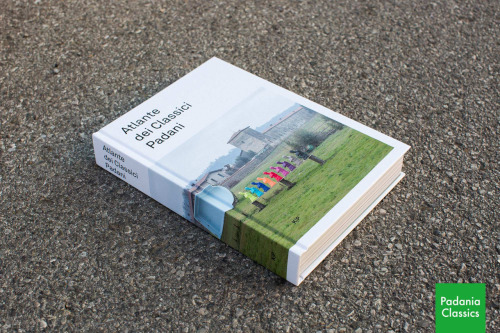
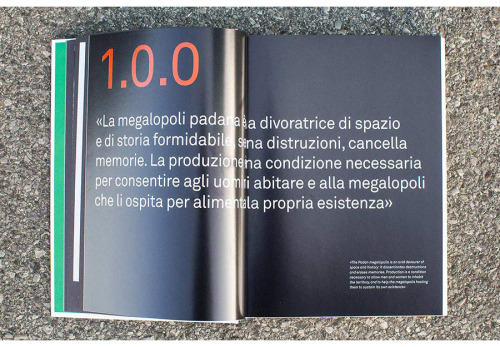
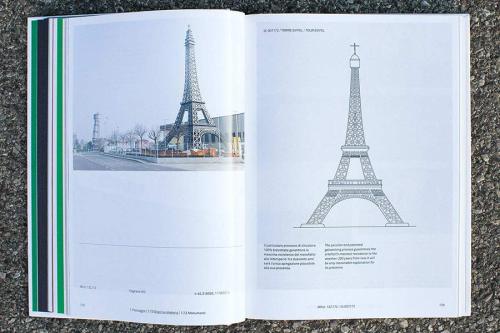
Working as a group, did you notice certain influences from individual perspectives?
FM: We only worked as a group during the editing of the book and it was fantastic. It really was a team effort: I was getting tips about missing locations and subjects. Emanuele Galesi (the journalist who wrote the texts) adjusted his ‘reportage’ style to the ironic narrative of the project and the editors of Krisis Publishing added some details with a different flavor seeing that their approach is more academic. The result made the introspection and slow process totally worth it.
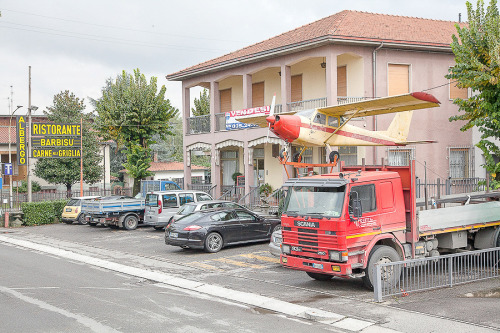
© Filippo Minelli
Looking at your project, it reminds me of the Italian experience of ‘Linea di confine’. How did the landscape photography research change in your opinion? What should for you be the role of photography nowadays?
FM: Well, I might not be the best person to answer this question as I don’t exactly come from a photographic background, but I feel like ‘Linea di Confine’ was very focused on the beauty of each picture and its formal composition. The incredible Italian landscape photography ‘school’ mainly addressed the idealization of landscape. My intention never was to go in that direction because I’m more interested in the archive structure and what role photography plays nowadays.
What intrigues me at the moment is how a democratic use of photography on social media is helping to globally overcome personal issues and to talk about things we didn’t before, for example, subjects related to sexuality or the true aesthetics of crime (via images uploaded in the dark web). Somehow I’m more interested in the process rather than the final result and even though I truly like black and white photography, I also like to question my interests.
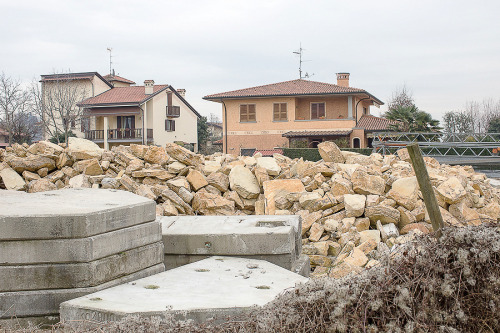
© Filippo Minelli
New technologies and Graphic design formed the hybridized ‘Classic Padania’ project, which is not exactly a traditional photography project. Could you explain this a little more?
FM: Again, not coming from a photography background, this is a crucial aspect for me. The project started simultaneously with the spreading of photography online and the conceptualization of a weird use of language to emphasize the absurdity of the landscape. It also developed into a fake touristic agency with its own website. In real life it started showing up with booths at fairs and distributing fake promotional material. Additionally, we are working on organizing guided bus-tours in the weirdest areas of Padania (a sort of conference on wheels). So the aspect of performance is also key to the approach of ‘Padania Classics’. Publishing a 720 pages book on the subject was a funny way of keeping the project ironic too. It’s an absurd concept to have a book about disasters in the same size as editions on history of the Arts or architectural styles.
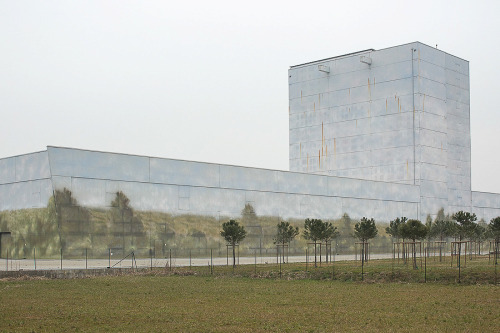
© Filippo Minelli
We were all inspired by Eugenio Turri’s definitions and analysis of North Italian landscape and by The Sochi Project which is a fantastic reportage. "Learning From Las Vegas" also played a role during the final phase but we only realized all of this when the book was printed.
Tell us about the reactions you recorded while developing and showing your project…
FM: It usually depends on the context but it ranges from a deep sense of sadness to outbursts of laughter. Being under the impression that the touristic agency showing Padania to foreigners was real, one old man from the separatist party Lega Nord even cried talking about his past as an activist.
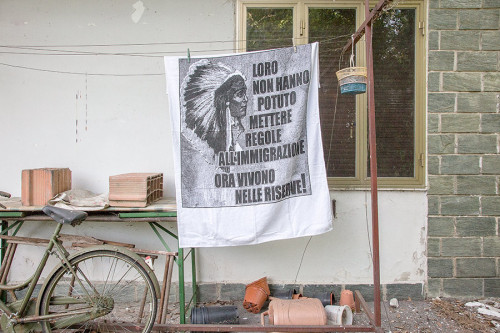
© Filippo Minelli
And finally, how do you think the ‘Padania Classic’ experience might evolve in the future?
FM: Right now we are overwhelmed with presentations of the book and the calendar doesn’t allow for much planning. However, what’s sure is that we’ll start the bus tours I told you about and that we’ll have a comprehensive exhibition of the project in Germany in 2016. We are also working on a plan to fund controlled implosions of buildings and the realization of a new commercial mall covering a vast agricultural area.
Info on the book ‘Padania Classics’ published by Krisis Publishing available from here.
---
LINKS
Padania Classics
Italy
share this page